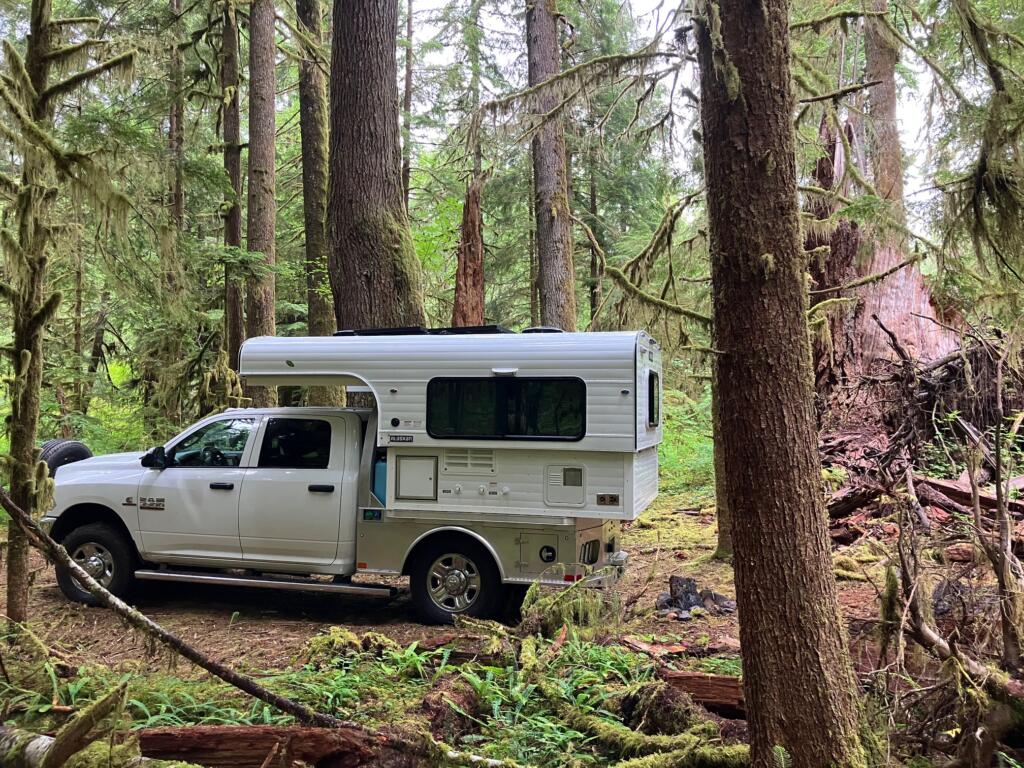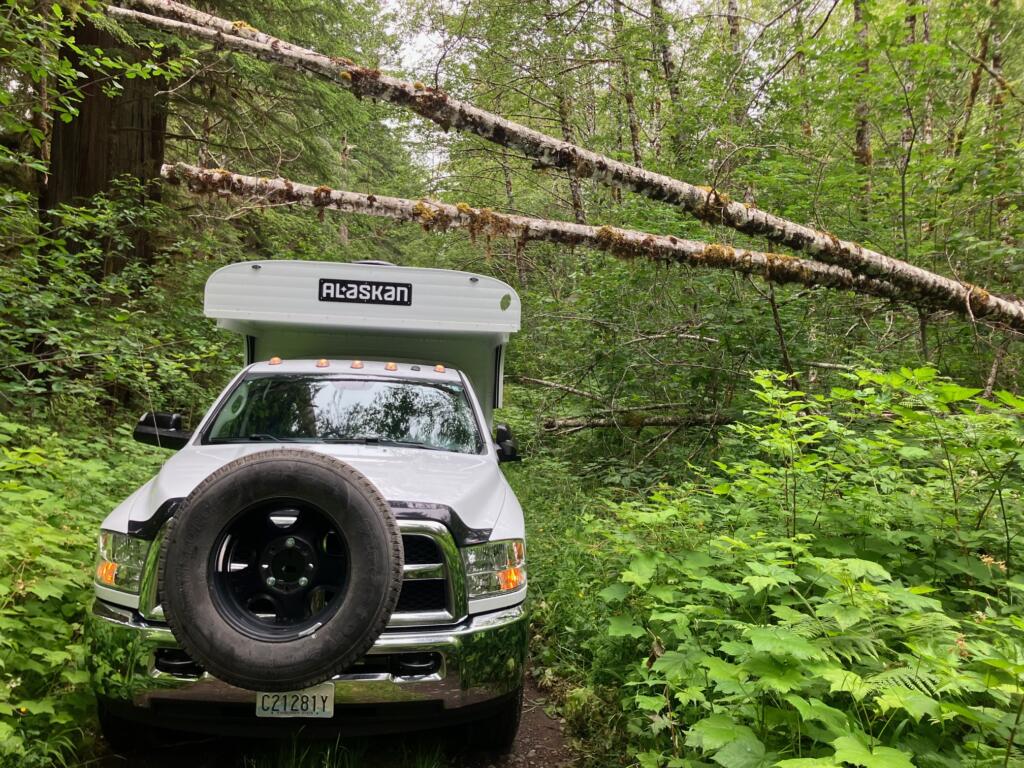After years of traveling with a trailer and their daughter, Ann and Alex Genn traded space for access—downsizing their rig just as their family downsized too.
When their daughter left for college, Ann and Alex sold the trailer. It had done its job—room for three, and the comfort to cover long miles. But it also came with limits. Too big for the roads they wanted to try. Too noisy at night, with generators humming, dogs barking, and neighbors just a few feet away. Too often, it landed them in RV parks that felt more like apartment complexes than campsites.
So they let it go. In its place: something smaller, more capable, and finally ready for the kind of travel they’d talked about since the beginning. No reservations. No hookups. Just quiet roads, empty trailheads, and a little more dust.
Their first trip wasn’t anything epic—just a few days on the Olympic Peninsula. But it brought quiet roads, remote campsites, and a few fix-it moments—and confirmed that they’d finally found the kind of camping they were always after.
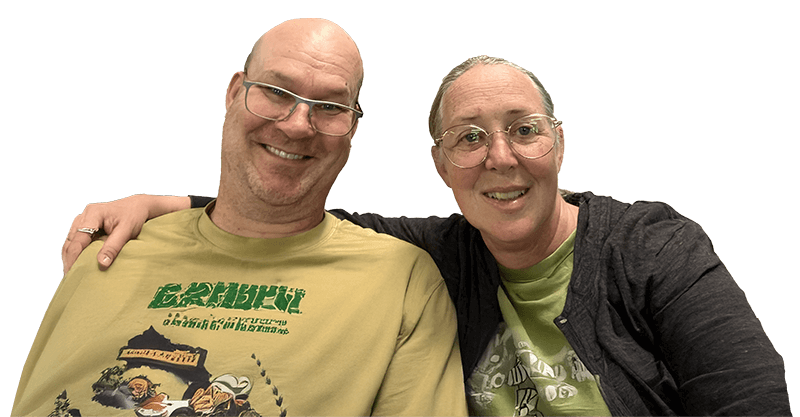
Meet Ann & Alex
These two really know how to live on the move. As recently retired Army veterans, they’ve logged their share of miles—first in uniform, then with their daughter in tow. For years, that meant a tow-behind trailer, long summer loops, and roadside campgrounds that worked well enough for a growing family. But they’d always imagined something smaller. Simpler. A rig that could go where the pavement didn’t.
Now based in Steilacoom, Washington, they’ve entered a new phase: just the two of them, a flatbed truck, and a camper built to follow curiosity, not campgrounds. They prefer forest roads to KOAs, solitude over full hookups, and mornings that begin with the sound of a river instead of a neighbor’s generator.
“We always wanted to boondock when we first got into RVing,” Alex said. “But the Bigfoot wasn’t built for rough roads. This setup finally gets us there.”
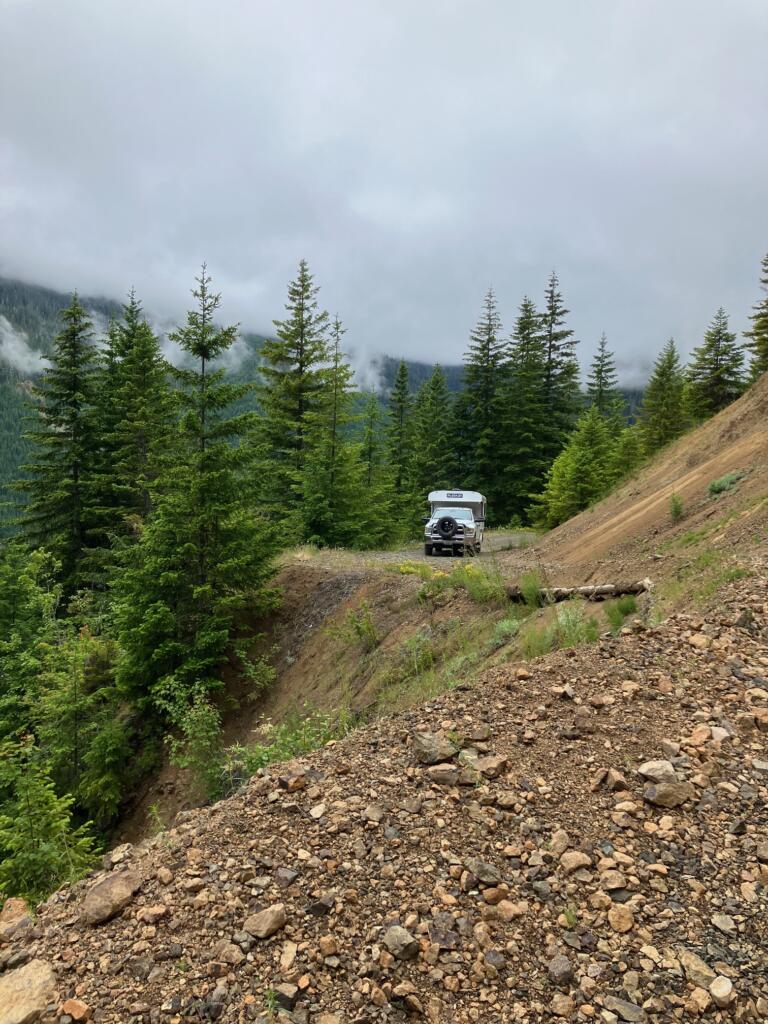
A Good Fit, For a While
They’d originally set their sights on a truck camper. But when the RAM they purchased came with factory RamBoxes, the Northern Lite they’d lined up wouldn’t fit. It was a last-minute disappointment, but not a dealbreaker. With their daughter still traveling with them, they pivoted. A 17.5-foot Bigfoot trailer gave them the space they needed and the comfort to travel together. It was dependable, but it never quite gave them the freedom they were after—or the ability to reach the places they were curious about.
A New Direction
Early on, they toured a flatbed pop-up camper with a side-entry layout. The floorplan felt right. But the canvas sides didn’t. It wasn’t quite what they were looking for. Later, while browsing a general flatbed camper group on Facebook, Ann came across a hard-sided pop-up design that immediately stood out—solid, compact, and closer to the kind of setup they’d pictured all along.
They made the drive to our headquarters in Winlock, WA for a factory tour.
We came down, got the tour, the brochure, the whole walk-through,” Alex said. “Maia was great—answered our questions, helped us figure out what would work. That’s when it all kind of clicked.
First Time Out in the New Camper
They didn’t set out to go far—just far enough to breathe a little and see how the new setup handled the kind of country they’d always wanted to reach. Over a few days on the Olympic Peninsula, they followed winding forest roads and quiet DNR-managed stretches, linking together rivers, ridgelines, and tucked-away spots where the loudest thing around was the sound of their own fridge. They weren’t chasing mileage. Just space, stillness, and the kind of nights you can’t reserve online. For the first time, they had the right rig to get there.
Higley Peak
From there, they made their way toward Lake Quinault, taking a paved road north from Montesano and reconnecting with Forest Service roads on the far side. They climbed toward Higley Peak and found a small clearing near a trailhead—quiet, open enough to glimpse snow-capped ridges through the trees, and just out of reach for most weekend traffic. They stayed until the stars came out. No one else passed by.
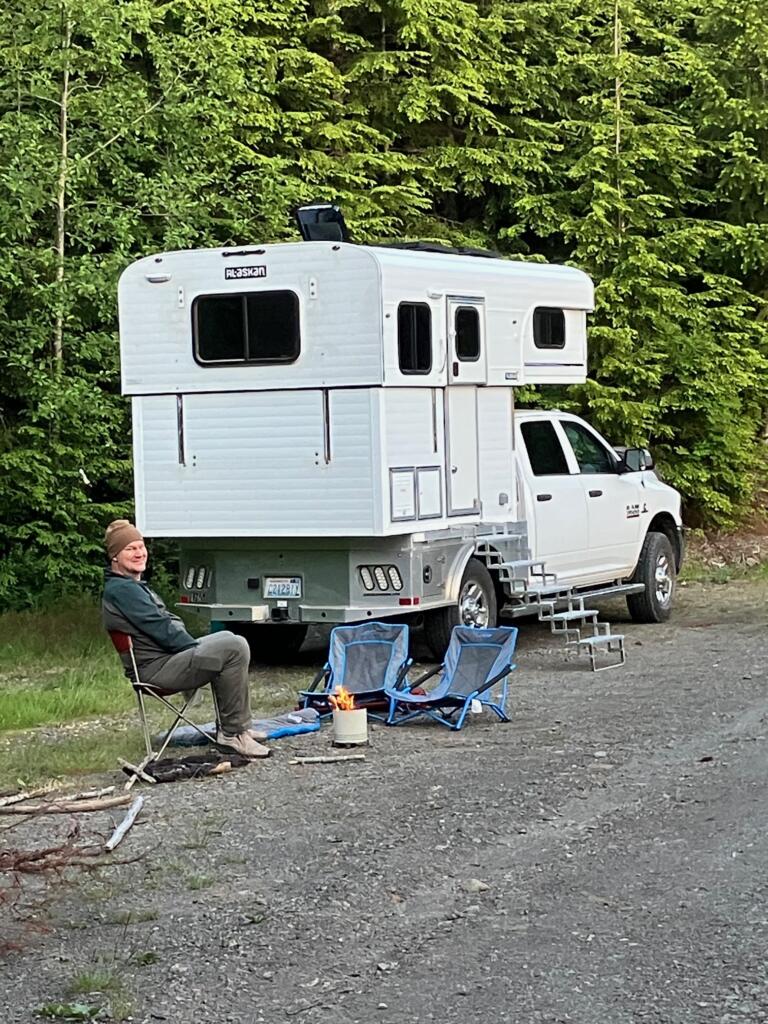

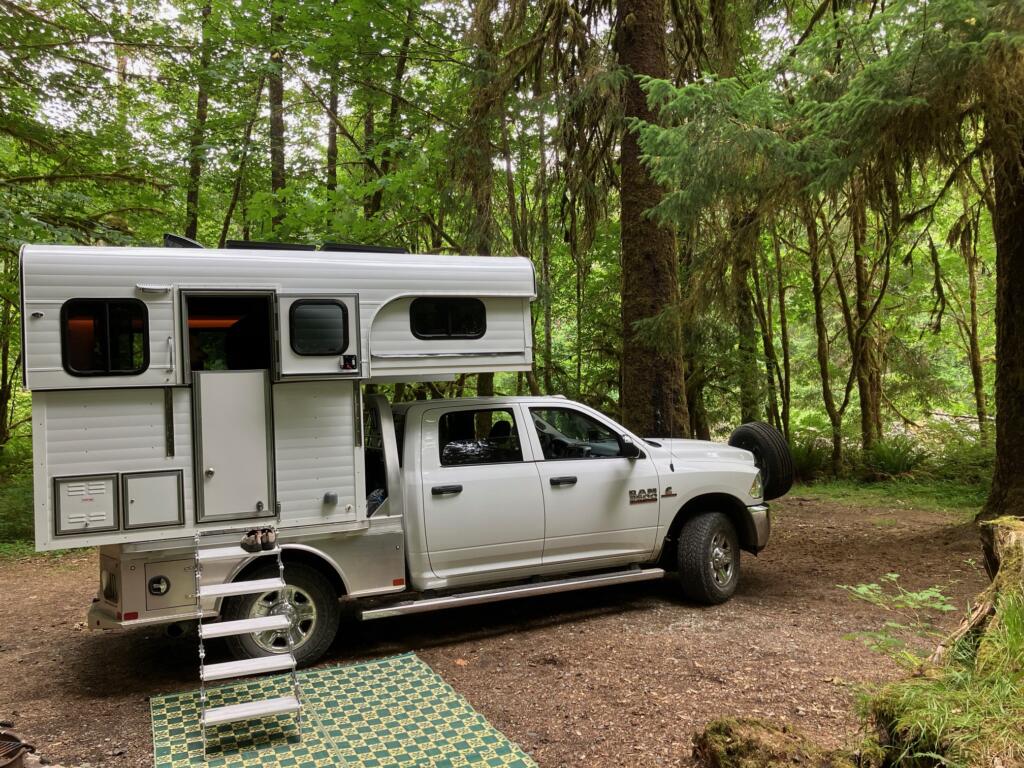
South Fork Clearwater
On the final leg, they turned inland onto Clearwater Road—a quiet, paved stretch that parallels Highway 101 through tribal lands and public forest. They’d hoped to boondock at the road’s end near a trailhead, but the brush was too thick, and low-hanging branches made the solar panel clearance feel like a gamble.
Instead, they dropped into the South Fork Campground—a quiet, no-reservation site along the river that turned out better than expected. There was room to spread out, easy water access, and a shaded corner for geocaching. It also gave Ann more time to practice fly fishing—something she got into after their daughter picked it up and passed along the spark. A few locals set off early fireworks nearby, but the rest of the night was still. Slow mornings, smooth water, and the kind of quiet that’s hard to find unless you know where to look.
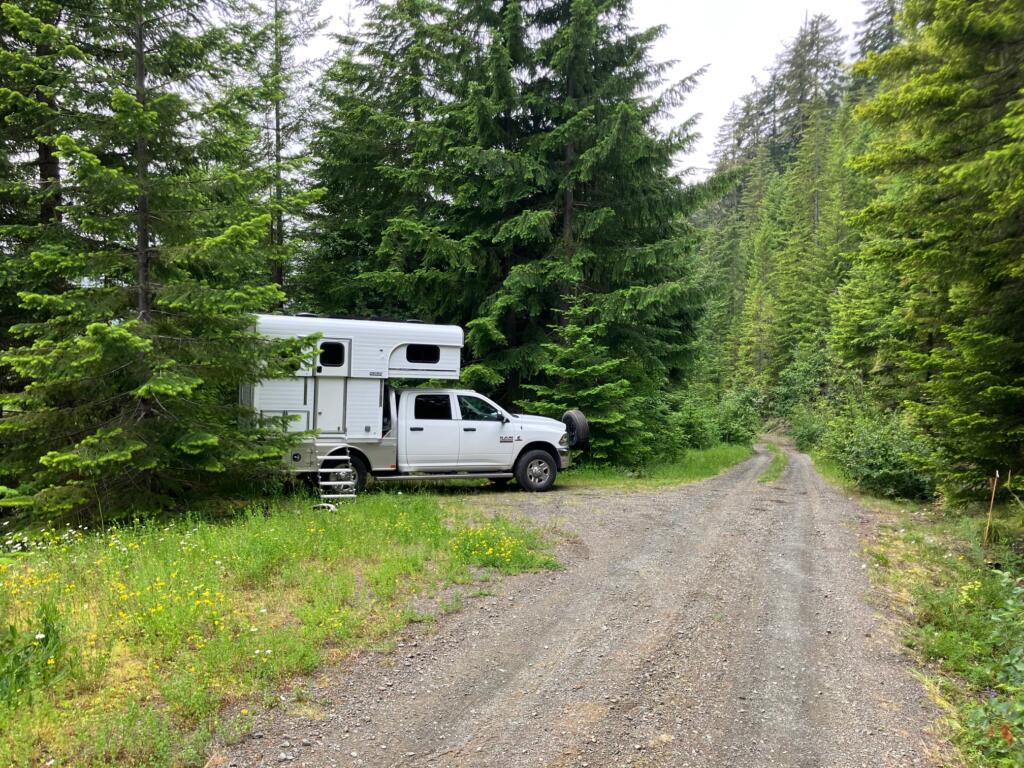
The First Real Test
Besides being recently retired from the Army, Alex is a hobby boot builder—someone who’s spent years shaping materials until everything lines up just right. He has an eye for precision, and a feel for when something’s just a little off. So it didn’t take long for him to spot a few quirks in the camper: a roof pin that didn’t seat quite right, some trim that felt a little off, and composting toilet brackets installed backwards, making cleanout clumsy. Nothing show-stopping—just small details worth noting. He’s already tackled a few fixes himself, and we’ll be following up on the rest as they put more miles on the rig.
Still, the heart of the camper delivered. It stayed warm through cool nights, and—according to Alex—the bed slept better than anything they’d had before. The dinette seats, he added, might be the most comfortable he’s ever sat in. Paired with a composting toilet and a simple grey water line to a jerry can, the setup freed them from campground routines. No sensors to check. No tanks to empty. Just a rig built to linger, roam, and finally camp the way they’d always imagined.
With their daughter settled at school and the camper dialed in, Ann and Alex are ready to stretch things out. First up: Beacon Rock State Park, with a detour to the lava beds near Mount Adams. Then a stop around the Yakima River Canyon while visiting Ellensburg.
After that, the road opens up. They’ve booked a ferry from the north tip of Vancouver Island to Bella Coola, British Columbia—where steep, narrow roads lead to a quiet campground and a nearby platform offers a front-row view of grizzlies fishing for salmon. Next stop? Glacier. Yellowstone. Maybe both. They’re not drawing lines—just following the road wherever it leads.
We’ll check back in once they’ve logged more miles and lived with the camper a little longer. For now, it’s working the way they hoped—and the road ahead is theirs to figure out.
Have a story to share? We’re always looking for Alaskan owners with real-world adventures to feature in Alaskan Life. Whether it’s a memorable trip, a unique rig, or an experience worth passing on, we’d love to hear about it. Email [email protected] and let’s chat.
